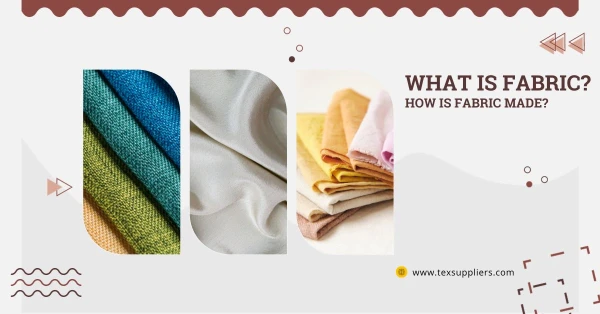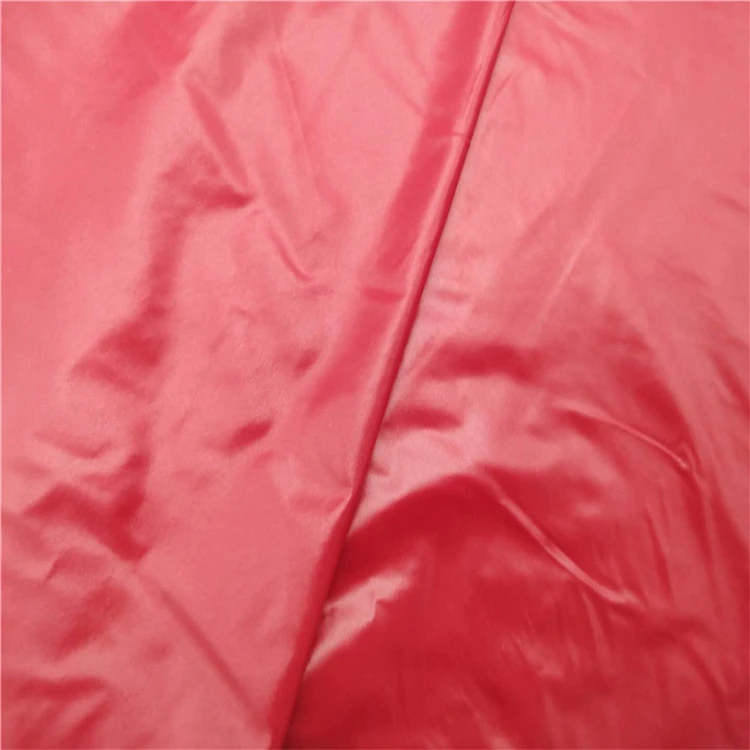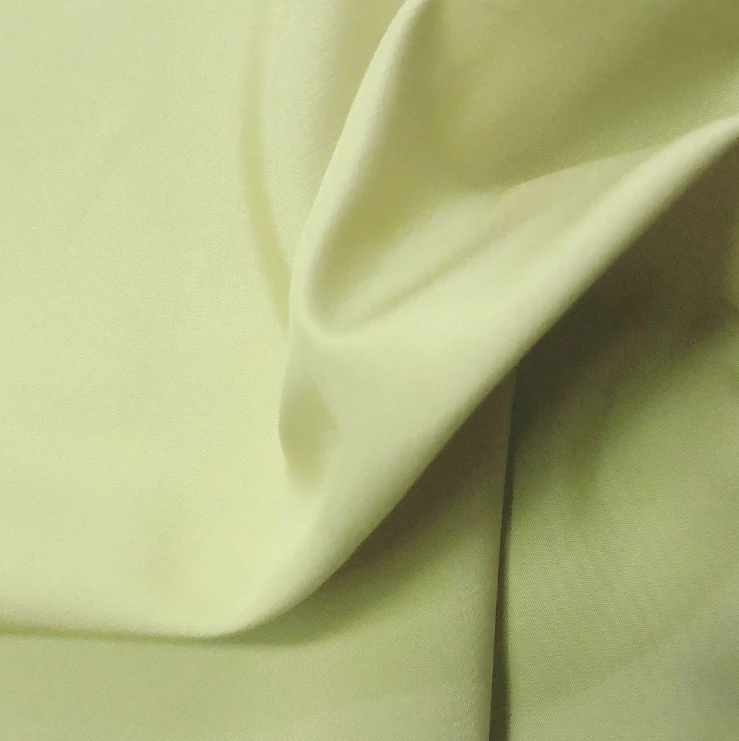Table Of Contents
What is fabric?
Fabric is a generic term used to define the material made of a continuous strand of textile fibers, filaments or yarns by using various techniques like weaving, knitting, and non-woven. Fibers are used to make yarn, and then fabric might be natural or synthetic. Here is how fabric is made.
How is fabric made?
There are basically three methods used to create fabric. They are as follows.
1) Weaving process:

Fig: WeavingWeaving is the most common and oldest method of producing fabric. In this process, two sets of straight yarns, named warp (ends) and weft (picks), cross and interweave at right angles to each other, making an interlacement between them. The resultant fabric is known as Woven Fabric.
2) Knitting process:
Knitting is the second most common technique of manufacturing textile products. It consists of forming a set of loops from a continuous yarn or a set of yarns by using long needles. Each loop connects each other and is released after a succeeding loop is formed to achieve a secure ground loop structure.
You may like: Difference between woven and knit Fabric
3) Non-woven process:
It is the process of making fabrics from one or more fiber layers bonded together by chemical, mechanical or thermal processes. Unlike weaving and knitting, the non-woven process doesn’t include interlacement or interlooping of yarn for internal cohesion. Felt is the most common non-woven fabric made from wool fiber.
Types of fabric - Different types of fabric in textile

Although textile fabrics are mainly used in clothing, home furnishing, and industrial, currently, a wide range of fabrics are being made based on the end use and customer needs. This is because the area of fabric application is getting larger with time. Many efforts have been made to classify textile fabrics from different points of views. Here are the classifications of fabric.
A) Based on the fabric structure:
Textile fabrics can be classified into four categories according to the fabric structures. They are briefly described below.
i. Woven Fabric:
Woven fabrics are made by an interlacement of two sets of yarns which cross and interweave at right angles to each other. The lengthwise yarns are called warp or ends while the yarns used in widthwise are known as weft or picks. Usually, woven fabrics are created on a loom, weaving machines, by the weaving process.
Woven fabrics are generally more durable than any other fabric structures and don’t stretch as easily as knitted fabrics. They have three fundamental weave designs which are plain, twill, and satin.
ii. Knitted Fabric:
Knitted fabrics are made by the interlooping of a set of yarn (s) by means of long needles. The loops are joined together by consecutive loops formed and released after a succeeding loop is created to obtain a secure ground loop structure. The loops along the horizontal direction are called course. On the other hand, the loops which are along the vertical direction are known as wales.
As opposed to woven fabric, knit fabrics employ only a set of yarn and stretch easily, but they are not as durable as woven units. There are basically two varieties of knit fabrics: warp knit and weft knit.
iii. Non-woven Fabric:
Non-woven fabrics are made from one or more layers of fibers, continuous filaments or cut yarns bonded or felted by means of chemical, mechanical or thermal bonding processes. As opposed to traditional woven and knitted fabrics, non-woven fabrics don’t depend on interlacement and interloping and don’t have any specific arrangements. There is no need for making yarn from fiber to make non-woven fabrics.
There are three methods of producing non-woven fabrics. They are: chemical bonding, mechanical bonding, and thermal bonding. The most common non-woven fabric is felt which is created by using short staple wool fiber.
iv. Braided Fabric:
Braided fabrics are made by intertwining three or more yarns in such a way that they cross each other at right angles or some other angles and are laid down in diagonal interlacement, making a flat or tubular rope-like material.
Braiding doesn’t interweave at right angles but just crosses over, differing from the weaving process. Braiding is a unique technique used to produce special construction for very specific purposes. Braided fabrics are widely used as trimming or binding.
B) Based on fibers used:
Another way to categorize textile fabrics is based on the origin of fibers or raw materials. With regard to this, there are three types of textile fabrics available. These are natural fabrics, synthetic or manmade fabrics, and blended fabrics. Here are some fabrics which fall into this category.
Natural Fabric:
- Cotton Fabric
- Wool Fabric
- Silk Fabric
- Linen Fabric
- Ramie Fabric
- Hemp Fabric
- Jute Fabric
- Leather Fabric
- Tencel Fabric
- Bamboo Fabric
Synthetic or Manmade Fabrics:
- Polyester Fabric
- Nylon Fabric
- Acrylic Fabric
- Acetate Fabric
- Spandex Fabric
- Polypropylene Fabric
- Microfiber fabric
- Polyester Fleece Fabric
- Synthetic fur and leather
- Vinylon Fabric
Blended Fabric:
Blended fabrics are made by a combination of two or more different kinds of fibers to create a new kind of fabric with unique properties. Here are some most common blended fabrics.
- Polyester and Cotton
- Spandex and Cotton
- Wool and Polyester
- Nylon and Silk
- Cotton, Polyester and Viscose
- Linen and Silk
- Ramie and Acrylic
C) Based on trade or brand names:
Textile fabrics can also be classified according to their trade or brand names. Here are some most common brand names of fabrics.
D) Based on end use or utility:
Last but not least, textile fabrics are available in three other types as well. This classification of fabrics is done depending upon the end-use.
i. Apparel:
Fabrics used in making clothes like top items, bottom items, innerwear, and outerwear fall into this group.
ii. Household:
Fabrics that are used in households are known as household or home textiles.
iii. Industrial:
Nowadays, a wide variety of fabrics are made for industrial applications. Here are some most common industrial fabrics.
- Technical Textile
- Smart Textile
- Protective Textile
- GeoTextile
- Medical Textile
- Outer Space Textile
- Agriculture Textile
- Construction Textile
















Comments - 00
Leave A Reply
Thanks for choosing to leave a comment.